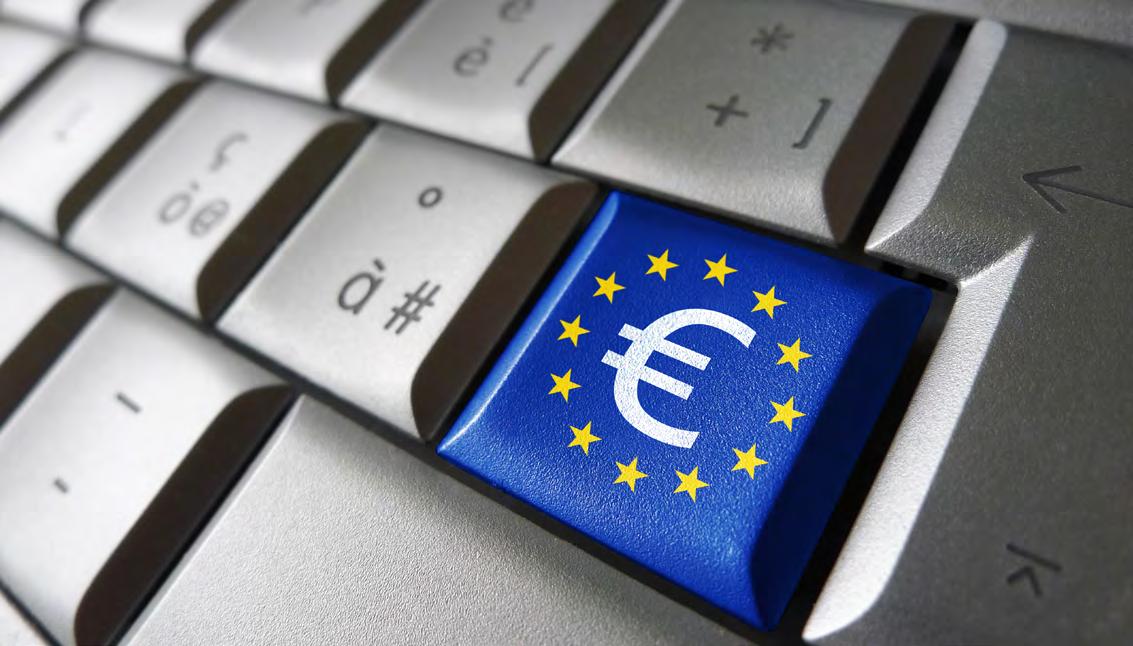
44 minute read
EU flexes funding muscle
from BR/02/2021
EU flexes funding muscle to boost startup ecosystem
The European Union is making strides in supporting the growth of the startup industry, having already made equity investments worth EUR 178 million through a specialised fund. EU funds could help Romania grow its startup ecosystem, which currently reports some EUR 36 worth of venture capital investments per capita, still below the European average.
Advertisement
By Ovidiu Posirca
EU funding for another 117 entrepreneurial companies is pending review
The European Innovation Council (EIC) fund has already financed 42 highly innovative startups or small and medium-sized businesses, with European funding for another 117 companies pending review.
INVESTMENTS TO KEEP HIGH-FLYING STARTUPS IN EUROPE
The EU has already provided around EUR 563 million in grants to 293 companies under the EIC Accelerator programme.
In short, the EIC fund blends equity investments with grants and aims to take a stake of 10 to 25 percent in funded startups. Equity investments start from EUR 500,000 and can reach EUR 15 million, depending on the firm’s size and development stage.
“For the past several years, EU has been showing increased interest in becoming more competitive and focusing on this segment of the market, as many successful European founders have been lured by US dollars to move their businesses off the continent,” Alexandru Bogdan, the CEO of startup investment fund ROCA X, tells BR.
The EU is deploying new funding instruments as it aims to have its own home-grown startup giants. While the value of European companies backed by venture capital stands at USD 700 billion, this figure reaches USD 10 trillion in the US, according to a report published in late 2020 by dealroom.co and Sifted.
Data from professional services firm KPMG show that in 2020, venture capital investment across Europe reached a record
USD 49 billion, up from USD 42 billion in 2019.
“We expect some Romanian start-ups and SMEs bringing breakthrough innovations in health, circular economy, advanced manufacturing, and other areas targeted by the EIC Fund to receive equity financing to develop and scale up their companies,” adds the ROCA X CEO.
Startups can use EU funds to develop research and development operations, to launch new business lines or to venture abroad.
Nonetheless, founders haven’t taken EU funds into account so much until now because they tend to follow the same pattern as the traditional approach.
“The startup ecosystem needs funds to speak its language. The fact that interest is growing is a good thing, but the EU will have to adjust its offer if it wants to win the competition against the US and China. Rather than providing funding, they have chosen to adapt their legislation. This approach seems to be more productive,” Ionut Patrahau, co-founder and chief innovation officer of SeedBlink, a crowdfunding platform for startups, tells BR.
EARLY-STAGE INVESTMENTS HIT BY PANDEMIC
The EIC fund could stimulate the local startup ecosystem, which recorded a decrease in venture capital investments in the pandemic year. For instance, cumulative VC investments in Romania stood at EUR 200 million in the first ten months of 2020, down from EUR 700 million in the previous year, according to the dealroom.co and Sifted report.
For Bogdan Axinia, managing director of eMAG Ventures, the EU’s involvement in the local startup ecosystem is a good sign that can generate future growth. “It remains to be seen how having the EIC acting as VC for start-ups will work in real life: how fast they act, how much bureaucracy is involved, and what value the EIC can add besides capital,” Axinia says. The EIC Fund aims to support equality and gender balance and to significantly contribute to sustainability with a particular focus on health, resilience, and the green and digital transitions.
Marius Nicolae, head of technology in strategy and transactions at professional services firm EY Romania, says the local ecosystem could use this alternative investment channel for startups with solutions that impact society.
“The development of startups with a social impact could bring benefits to Romanian society and to the country’s startup ecosystem, by promoting local innovation on an international scale. Romanian startups and other technology companies could access the fund and other EU programmes for research and innovation, to increase their prototype readiness, accelerate the commercialisation stage and access the European network of experts for further development,” Nicolae tells BR.
The EU is already shaping the growth of local startups through the European Investment Fund (EIF) as one of its shareholders. This separate initiative backs several venture capital and private equity funds operating locally.
Going into the first quarter of 2021, VC investments are set to remain strong in areas like FinTech, HealthTech, EdTech, software as a service (SaaS), and cybersecurity, according to KPMG consultants. However, for startups looking to secure early-stage funding, 2020 has proven particularly difficult. As the health crisis lingers, this situation could continue to impact founders of new startups this year.
VC investors were likely also hesitant about making completely new investments
without getting the opportunity to meet founders face to face due to the health crisis, according to the KPMG report.
First-time venture financing of companies in Europe fell by 20 percent to 1,546 deals in 2020 versus 2019, while the deal value remained flat at USD 3.5 billion. The average seed investment in a European startup was USD 1.3 million last year, up from USD 1.1 million in 2019.
The EIC could provide additional funding opportunities for entrepreneurs who have been struggling to get money from angel investors or other funds backing startups in early stages.
Health & fitness hour - powered by World Class

WHY DO WE LOVE TO EXERCISE? FIND OUT NOW ALL THE ANSWERS THAT MATTER
How often do you exercise? How motivated do you feel? Do you often postpone exercise to another time? Starting from 2021, put exercise in the first place because it is worth it. Physical exercise is a champion of health, longevity, and immunity!
Medical studies and research prove it, the World Health Organization states it and all those who have already turned exercise into a lifestyle already enjoy the benefits: exercise is medicine. It prevents and relieves the most common chronic diseases in the world: cardiovascular disease, diabetes, and obesity. Moreover, movement strengthens bones, maintains joint flexibility, supports brain health, fights stress, depression, and anxiety improves sleep quality and gives you a state of well-being that can be seen on your face.
THE OFFICIAL RECOMMENDATION HAS CHANGED! 300 MINUTES OF EXERCISE A WEEK, NOT 150!
Are there enough reasons to make a change also? The COVID-19 pandemic could be another serious reason. The World Health Organization also states that exercise is extremely important in the fight against COVID-19. Moreover, during this period, the WHO doubled the daily period of recommended moderate exercise each week, from 150 minutes to 300 minutes! Put your health where it belongs, on your daily list of priorities. When you realize the amazing changes that exercise brings to your life, it will be the time when you make the best decision for health, immunity, and longevity: transforming movement into a lifestyle. The #BeHealthy lifestyle, as the 65,000 World Class members call it.
WHEN YOU DON'T HAVE TIME FOR ANYTHING ELSE, CHOOSE HIGH-INTENSITY WORKOUTS THAT LAST ONLY 30 MINUTES!
Did you know that an intensive World Class Les Mills Grit Cardio session only takes 30 minutes? Half an hour in which you get maximum results for your health and fitness! Your cardiovascular system will become stronger, you will burn a large number of calories during training and many hours later, your metabolism will work with the accelerator pedal pressed to the maximum, and your physical strength will increase rapidly. Only 30 minutes, two or three times a week! That's all you need to move on to the next level of health & fitness. You work your body like an athlete and you enjoy an extraordinary energy all day because cardio exercises really do what they say: they contribute significantly to your heart health!
IF YOU TAKE A BREAK, IT'S HARDER TO RESTART, BUT NOT IMPOSSIBLE. BE SMART!
It may be difficult to resume intense physical activity after a break of a few months. Find out what steps you need to take to quickly get back in top shape. First, make sure your goals meet the SMART criteria. SPECIFIC: It is not enough to say that you want to "be in shape", you must have a more precise goal. For example: I want to be able to climb 4 floors again without getting tired. Or, more specifically: I want to reach X kilograms! MEASURABLE: Once you identify the specific goal, make sure you can measure your progress. After all, if you don't evaluate, you just guess and you never really know if your effort was a success. Are you trying to reach a certain weight? Weigh yourself periodically or take measurements of your body composition. APPROACH: Regardless of your goal, you need to be confident that you can achieve it. If you are afraid that it is not a very realistic goal, consider dividing the goal into smaller objectives. For example, instead of trying to lose 10 pounds in a month, try to lose only three. He's even healthier. RELEVANT: Before you set your goal, think about what you enjoy and start from there. This is also true for smart diets. A good nutritionist will first ask you what you like to eat and will build your new eating plan based on your preferences. TIME: Goals like "I train to be fit" or "feel good" are vague and without a deadline. You choose a date when you think you will reach the goal. If your goal is to lose weight, then you should know that the doctors' recommendation is to aim for between 1.5-3 kg less per month.
In 2021, get into the #BeHealthy rhythm! Whatever your goals are related to mind and body wellness, the health & fitness club is the place where they can quickly become a reality. If you want to combine fitness with fun, try the group fitness classes at World Class. Music, energy, great atmosphere, lots of smiles and laughter, everything combines perfectly so that every day is lived in the #BeHealthy rhythm! On www.worldclass.ro you can find out which classes are best for you, meet the World Class personal trainers and find the nearest World Class club.

How the pandemic has reshaped Romanian businesses
Remote work, online meetings and events, empty office towers are all parts of the current reality, but many of them could continue past the end of the COVID-19 pandemic. Many companies have rethought their way of doing business, and many employees have found a more balanced lifestyle – with more time to spend with their families, for example.
By Sorin Melenciuc
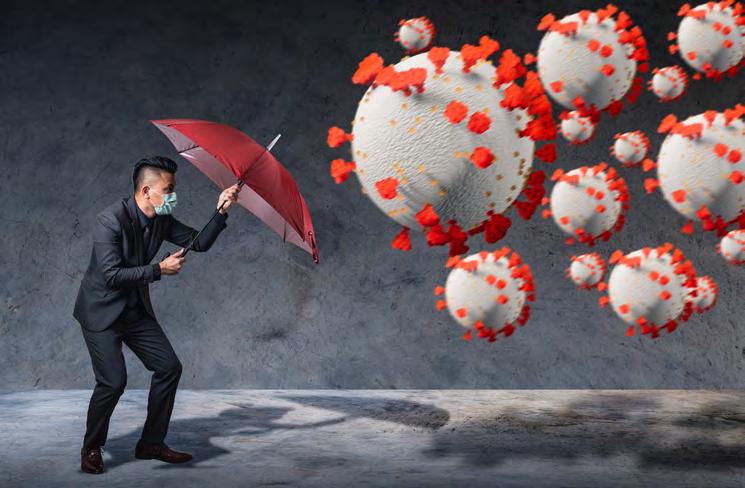
Many people are transitioning from being full-time employees to part-time jobs, self-employment or freelancing
This new reality is having a huge impact on business practices. The first notable shift refers to the fact that most business are now more reliant on remote work instead of office-based work. This has become the norm within less than a year, since the beginning of the COVID-19 pandemic, and there are many reports that prove it.
According to real estate consultancy JLL, Romania's office rental market fell by 36 percent year-on-year in 2020, to around 300,000 square meters. The main causes of this sharp decline include the shift to remote work and the financial difficulties that many companies have experienced during the pandemic. In fact, many sectors, from hospitality and tourism to the auto industry, registered much lower revenues last year, so the appetite of many businesses for renting office spaces has plummeted.
THE SHIFT TO REMOTE WORK
Across the globe, most companies are intensely debating the issues raised by the work-from-home experiment, and many businesses are planning substantial shifts as a result. “With workforces now located in kitchens, basements, and attics, what will happen to all those sleek urban office towers and their glossy suburban counterparts? The answer has to start with their current tenants. (…) In the short term, 70 percent of corporate-centre executives plan to reconfigure office space, as do 54 percent of businessunit leaders. Over the midterm, 30 percent of corporate centres want to terminate existing leases early, compared to 14 percent of business units,” a recent McKinsey global report indicates.
However, the shift to virtual working was already underway at the beginning of the pandemic in many organisations across the globe, but experts now anticipate that it will remain a very common practice.
A recent Deloitte report shows that 75 percent of CFOs in the Netherlands have said that they intended to shift at least 20 percent of previously on-premise employees to permanently remote positions after the end of the pandemic. “In addition to our workspaces, the way we work has been heavily affected, ranging from minor changes (adding a video element to a meeting) to major ones (fully virtual check-in at hospitals),” Deloitte experts write.
Another key factor for the future of working is that the pandemic has accelerated a trend that had been growing in the last decade. Many people are transitioning from being full-time employees to part-time jobs, self-employment or freelancing. In Romania, more than 300,000 individuals have part-time jobs, which allows them to spend more time with their families or enjoying their hobbies. But the pandemic seems to have accelerated this shift. In August 2020, the Romanian eJobs platform registered a 10 percent increase in applications for remote and part-time jobs.
However, office work is not going to disappear, despite the pandemic, because some types of businesses and activities simply cannot be operated remotely. In these sectors, experts suggest that the pandemic has had an
impact on productivity.
“Those who continued to work on site during the lockdown experienced a slowdown in work and productivity (aside from vital sectors), in tandem with strict social distancing and personal hygiene measures. Supply chains have also suffered, due to severe disruptions brought on by halts in production and transportation,” the report indicates.
These current realities are putting pressure on business leader to reimagine what the workforce means beyond traditional work arrangements. “It means using the strength of the open talent economy to connect furloughs and layoffs to immediate opportunities. Business leaders should also be actively planning for the use of the alternative labour market to scale, recover, and thrive,” Deloitte
experts suggest. Official data in many countries showed that, with the onset of the pandemic, flex-workers (such as self-employed or freelancers) were the first to be affected. Now, experts expect COVID-19 to increase many businesses’ appetite for flexible workers.
INNOVATE OR DIE
Another consequence of the pandemic, as seen in other crises as well, has been the rising importance of innovation as a key factor of business survival. Whenever a market shrinks, the more innovative businesses generally have a better chance to survive on the market, while less innovative ones tend to disappear.
This principle applies even in sectors like restaurants or hotels, where innovation is not always so obvious. In Romania, hotels and restaurants lost at least a third of their revenues in 2020 compared to 2019. Many businesses in this sector just left the market last year due to the crisis, but many others survived.
According to current projections, indoor dining in restaurants may not return to pre-crisis levels for months – possibly even years. For full-service restaurant operators, developing a new long-term economic model becomes crucial.
Based on practices seen in many countries during the last year, experts suggest there are opportunities to optimise takeaway and drive-through operations and re-engineer menus and pricing. This might include find-
ing the right balance between special offers and “high-margin items such as appetizers, sides, desserts and beverages,” according to a McKinsey report.
Such strategies can already be observed in Romania as well. Two local entrepreneurs, the owners of a fine dining restaurant called Anika in Bucharest, have managed to survive during the pandemic thanks to an innovative strategy.
“We change the menu at Anika on a monthly basis, in order to follow seasonality and remain creative. (...) During the state of emergency, we reorganised and decided not to start food delivery, but to create a set of five jars which contained meat, our smoked trout paté, duck confit, cherry jam, etc. It was a real success and it allowed us to stay afloat,” Alexandru Dumitru, one of Anika’s owners, told HORECA magazine.
DIGITAL ACCELERATION
The current pandemic is also accelerating business digitalization, a very visible factor even before the healthcare crisis. Experts are calling the ongoing trend the Fourth Industrial Revolution (or Industry 4.0), promising huge wins for companies that have already scaled digital technologies.
“Those that were still scaling faced a reality check, and 2020 was a wake-up call for those that hadn’t yet started on their Industry 4.0 journeys,” a McKinsey report notes. This applies to many sectors, and one of them is healthcare. In fact, the pandemic has hugely accelerated the growth of digital healthcare. In 2020, almost half of US patients used telehealth services, compared to just 11 percent a year earlier.
This surge in telehealth is a huge business opportunity that digitalization helps. India’s Apollo Hospitals, comprising more than 7,000 physicians and 30,000 other healthcare professionals, launched a digital health app called Apollo 24/7 in early 2020. Within six months, the app had enrolled four million people.
Such business opportunities are appearing across the globe, including in Romania. A local startup launched in 2019, SanoPass, is now the largest platform that connects medical clinics and companies in Romania. The company now has more than 10,000 subscribers, a fivefold increase compared to the beginning of the pandemic, in March 2020.
“The company’s evolution in 2020 was the result of a strategic change. This meant a repositioning of the company from a subscription issuer addressing employers only to a platform that digitizes, connects, and individualises all preventive medical services, which generated advancement both in the area of companies as well as in the individual customers segment,” says Andrei Vasile, the CEO of SanoPass.
Many experts forecast that these trends and strategies will become even more important in a post-COVID -19 world, because of how much the pandemic has accelerated digitalization.
Romania should benefit from huge amounts of EU funds in the coming decade – around EUR 80 billion to be exact. But many funds are associated with some ambitious plans drawn up in Brussels – like the EU aiming to become carbon-neutral by 2050 – and this means that much of the money will go to “green” projects designed to reduce pollution, enhance innovation, and create new carbon-free markets and businesses.
By Sorin Melenciuc

A major challenge for the Romanian government is implementing a series of reforms in the public sector
This means that decision-makers in Romania should change the way they think in order to both benefit from the available EU funds and restructure the local business environment.
EU FUNDS BONANZA
The biggest source of money for Romania in the next decade will be the EUR 1.07 trillion multiannual financial framework (MFF) for 2021-2027. Romania has secured EUR 46.3 billion from the 2021-2027 MFF, with the largest part consisting of cohesion funds (EUR 26.8 billion) and another EUR 18.6 billion allocated for agriculture and rural development. The second financing package is the Recovery and Resilience Facility (RRF), which will make EUR 672.5 billion in loans and grants available to support reforms and investments undertaken by EU member states.
The RRF is the main support scheme of the NextGenerationEU, a temporary recovery instrument that allows the Commission to raise funds to help repair the immediate economic and social damage brought about by the COVID-19 pandemic. The aim of these funds is to mitigate the economic and social impact of the pandemic and make European economies and societies more sustainable, resilient, and better prepared for the challenges and opportunities of the green and digital transitions.
Romania’s share of the RFF is EUR 33.5 billion, but some money was already used last year to tackle the impact of the healthcare crisis. However, there are several conditionalities in the NextGenerationEU framework. First, all member states must prepare recovery and resilience plans that set out a coherent set of reforms and public investment projects. To benefit from the available support, these reforms and investments should be implemented by 2026.
Second, the Recovery and Resilience Facility requires member states to make a commitment to the twin transitions: green and digital. In order to reach this target, the European Commission will assess the national plans against two major targets: 37 percent of funds should be used for green investments and reforms, and 20 percent for digital investments.
“Each recovery and resilience plan will have to include a minimum of 37 percent of expenditure related to climate. Progress towards other environmental objectives is also important, in line with the European Green Deal,” the EU Executive arm said last year. The Commission is now developing a methodology to ensure investment is distributed to both green projects and digital capacities.
DIFFERENT PRIORITIES
These requirements are the first major obstacles for Romanian authorities, who have a different view of local priorities. Romania joined the EU in 2007 but has had a poor
record in properly spending EU funds. The country has been developing at a fast pace over the last 14 years, limiting the gap in terms of general development measured by indicators such as GDP per capita, but it remains one of the poorest countries in the bloc. On the other hand, Bucharest has mismanaged large investments in infrastructure, and the result is that Romania currently has only about 900 kilometres of motorway and a limited number of upgraded railroad infrastructures. The former government, led by Ludovic Orban, thought that it could use a large share of the new EU funds to finance infrastructure projects and prepared a draft national recovery and resilience plan (PNRR) with this objective in mind. As expected, the first Romanian plan was not considered acceptable by the European Commission, and an improved PNRR is now being developed by the new government led by Florin Citu, a Liberal economist.
“Our priorities in the development of the PNRR are initiatives that produce immediate effects in the economy and infrastructure, as well as projects which are already advanced. They will be prioritised following an assessment of the projects already included in the first version of the PNRR and of the new proposals we have received,” Investments and European Projects minister Cristian Ghinea recently told reporters.
The new government’s target is to finalise the new PNRR by early April 2021 in order to start applying for EU funds. In fact, as long as all relevant rules and regulations were adopted or ratified, EU member states could apply for funding as of January 1, 2021.
EXPECTED REFORMS
Another major challenge for the Romanian government is implementing a series of reforms in the public sector in order to increase its capacity to develop or assess projects, monitor implementation, and attract available EU funds within a short period of time. This is a hot topic as it could include dismissing incompetent public servants and restructure institutions and public companies, an unpopular measure for any government or political party.
Some small measures have already been announced in the form of a requirement imposed by prime minister Florin Citu to all members of the government: implementing restructuring plans in all public companies under their authority which registered losses in 2020. But there are other reforms included in the NextGenerationEU package, such as those necessary to reach the green energy or digital targets. These require real reform: strengthening institutions, imposing new and sometimes unpopular rules, pushing public sector employees to step out of their comfort zones. The future of Romania depends on the implementation of these re-
forms, which could allow the country to fully benefit from the funds.
With this large amount of EU funds, Romania could truly be modernised during the next decade and become a real developed country. If this attempt fails, there will never be another opportunity to succeed. country has still a long way to go to achieve its transition towards the new EU energy goals.
In fact, Romania’s energy strategy still relies on traditional sources such as gas and nuclear, despite its large green energy potential. Some experts are warning the government that if it doesn’t change its perspective, Romania will fail in its energy transition.
“We are about to make one of the biggest strategic mistakes regarding energy in our entire history. Instead of quickly setting clear priorities for the energy transition, commit-
ting to neutrality in terms of greenhouse gas emissions, (…) we are preparing, in almost complete political consensus, to throw billions of euros out the window by building new gas pipelines that can't even distribute hydrogen and green gas,” former Energy minister Razvan Nicolescu warned.
However, while the government still lacks a clear idea of how it could address the climate change issue in terms of its energy policy, many companies are seeing opportunities much more clearly. Restart Energy, a local independent electricity and natural gas supplier, has allied with Interlink Capital Strategies, an American consulting and fund management company, to develop green energy projects worth USD 500 million in Romania and neighboring countries. Many other smaller “green” projects, both public and private, are also flourishing all over the country. The EU aims to reach net zero emissions by 2050 and will probably adopt a new carbon reduction target of 55 percent for 2030.
BUSINESS OPPORTUNITIES
The large inflows of EU funds and their associated policies also represent huge business opportunities, on one hand, and raise tremendous risk, on the other. “We know that climate risk is investment risk. But we also believe the climate transition presents a historic investment opportunity,” BlackRock CEO Larry Fink said in a letter published at the beginning of 2021.
In Romania, the first sector that will really see the impact of the EU’s new Green Deal pact is the energy sector. Romania is among the EU member states with a high share of green energy, produced by hydro power plants, wind turbines or solar panels. But the
The impact of mindfulness on businesses in the work from home era
Focus group research conducted by e-days, a UK-based global absence intelligence company, has revealed that “wellbeing” is the most popular area of investment for HR leaders moving into 2021.
By Romanita Oprea

Anca Banita, life & business coach Loredana Popasav, The Simplified Mind

When asked to identify their top three investment areas for 2021, 45 percent of respondents identified wellbeing as their key investment area, particularly in response to the reported rise in mental health issues in 2020. 43 percent said they aimed to focus on investing in employee engagement. According to Harvard Business Review, mindfulness is now seen as a crucial skill in business.
But are mindfulness techniques really a big trend right now, even for business purposes? Accord-ing to Loredana Popasav, transformative coach at The Simplified Mind, the business world today is where the sports world was a few decades ago – starting to become aware of the importance of mental wellbeing and to acknowledge that an employee’s mental state influences their performance and outcome. “By now, many people have figured out the role clarity plays in business decisions. There is one common denominator between us all – we want peace of mind and calmness in our lives. When we talk about techniques, this implies doing something and putting more thought into it. This contradicts my understanding and experience of mindfulness as a state of peace, clarity, quiet mind and presence, where the thought process actually gets limited. Therefore, in my opinion, mindfulness as a state is extremely helpful, but techniques themselves do not make sense to me and I think they may lead people to focus on the wrong thing,” Popasav explained.
In turn, life & business coach Anca Banita, says that crises like this pandemic can put an untamed mind under the spotlight and cause it to lose its sense of control, so the need to train our minds has become evident in recent months. “According to a Harvard study, we are not really present in our lives 47 percent of the time. This is what mindfulness practices do: they give you back your life and your power. In mindfulness we work with our minds but also with our hearts, because our emotional life plays an important role as well. We learn to bring our minds back into the present, again and again, with kindness and softness. I think it’s time to learn how to do this; it is a life skill we need in such an unpredictable and complex world,” Banita argued.
In the era of housework being mixed with office work, the boundary between our personal and professional lives has almost disappeared. Mixing personal chores with tight deadlines isn’t exactly a routine we were used to. Running from one meeting to another – even if they’re virtual – while the kids are running around the house means that everyone needs a new mindset.
“This is where mindfulness stepped in as a means to understand and accept the present, to live our personal and professional lives under a new paradigm. Some were practicing it ever since before the pandemic, while for others it was a blank canvas to start from; let’s just say that by the end of the year, everyone in the company was feeling a need for balance. We have slowly transformed from a manufacturing-based economy to a knowledge-based one. While we used to work primarily with our bodies, now our brains do most of the work. Over time, working with the mind has caused increasingly serious mental problems for workers,” said Alecsandra Ionita, wellbeing spe-cialist at wellbeing. ro.
Therefore, Ionita added, mindfulness, mental fitness, and sophrology are important and a business should keep them in focus in order to thrive. These new self-development
techniques help combat and manage employee stress and at the same time reflect a major problem of today’s society: chron-ic stress. “There are more than 1,300 mindfulness apps you can find by doing a simple search, all focusing on breathing techniques, meditation, and visual representations. This is good; it means individuals and businesses have a foundation to start from in case a mindfulness programme has not yet been implement-
ed at their workplace. Mindfulness training has proven benefits for employee health and wellness, including helping to decrease stress and build resilience,” she explained.
The pandemic has changed everything, acting like a “magnifying glass,” as Popasav put it. She pointed out that people spent more time with themselves, thinking about themselves, fearing for their future. All these things can generate a higher level of mental noise. “I haven’t yet met anyone who likes to be tense, anxious or afraid. People want peace and quiet, but they are not sure how to achieve it. I know people have had various experiences in the last year. Looking back, we can all point to good moments and bad moments. Most of us are able to name certain benefits of 2020, whether they are personal, related to relationships or to the natural environment. We can also see the negative impact it had, in the lack of personal contact or the economic downfall. Whichever side we choose to look at, it will determine our experience of the moment,” Popasav added.
So, what techniques should we use? Anca Banita would advise beginners to start from a mindful-ness meditation. They can try MBSR training – they can find a free MBSR training course online, based on the programme founded by Jon Kabat-Zinn at the University of Massachusetts Medical School. It provides some simple, yet powerful techniques, such as Body Scan meditation or Sitting Meditation, all guided and easy to follow.
2021 TRENDS
In Anca Banita’s opinion, the pandemic has created this space for us to bring our whole selves to the office. The intense stress and the need to adapt so quickly to the rules of working from home also acted as catalysers for some precious transformation and insight. With emotions at such high levels, we could no longer hide them. As things were changing so rapidly, we could not hide our stress, either. And because we had to work from home, around children, family, and pets, we could no longer fake perfection. “There was and still is space for more authenticity, for embracing more vulnerability, for making room for our emotions as well. And I believe that this will stay with us and that emotions will play a more important role in 2021, together with deeper conversations around mental health and what a company culture really needs in order to help people feel support-ed and empowered to show their real selves. In 2020 I held workshops on topics such as Over-coming Fear, Powerful Tools for Managing Stress and Resilience, Mental Clarity, Our Brain in Crisis, and Mindfulness Techniques, and these are issues that would never have found a place in the corporate world before the pandemic. They’ve now made their way in, which is encouraging, and they will continue to be in the spotlight in 2021,” said Anca Banita.
According to Alecsandra Ionita, trends emerging in 2021 tend to lead to a healthier employee: both physically and mentally. Two other notable trends are the focus on being positive at the workplace – Positive Psychology – and a technique developed in 1960 by a Spahinsh neuropsychiatrist – Sophrology.
“Positive Psychology is a trend that takes multiple forms, including programmes for mental fitness or positive intelligence – a term developed by Stanford University professor Shirzad Chamine. The outcome of implementing such a programme for a business that either had to suffer in 2020 or reached a peak in its development is mind-blowing. A Positive Intelligence programme delivers a simple, doable, ground-breaking set of exercises that can help develop one’s ‘performance’ mus-cles, increase their PQ score, and gain access to previously untapped mental resources. By access-ing a mental fitness programme rooted in positive intelligence, you can only bring success to the managers who are involved and ultimately to the entire company. The model is a brilliant breakthrough as it defines, measures, and improves your awareness of your own performance and happiness,” Alecsandra Ionita explained.
At the same time, Sophrology has started to gain ground in Europe and some see the future of mindfulness in it, as it combines meditation, breathing, and relaxation techniques with gentle movement and visualisation. A recent Kent Business School study found that sophrology had a positive impact on employees’ physical and mental health, and more research is underway.
In Popasav’s view, the higher awareness of mental health the conversations around it are the big-gest trends. “It is probably the first time in modern history when we’ve spoken freely and openly about mental health, when its importance in all aspects of life and business has been recognised. We know that top sports stars consider mental preparation to be as important as physical training, and we are beginning to see this in our personal and business lives, too. I predict that this will con-tinue to happen over the next decade and that HR departments in many companies will have a men-tal health development team just as they have training managers today,” she said.

How to set business objectives at the start of the year
The COVID-19 pandemic has changed many aspects of the way entrepreneurs and business owners see their activity as well as the manner in which they organise their everyday work. But, one of the things that should never change is our perception of a new year: it should begin with hope as well as with some strategic planning that will help set the tone for a good, productive year. Plus, it’s the perfect time to assess where your business stands and what type of actions required.
By Romanita Oprea

Focus on how to grow your business, strengthen your products and services
According to Bernard Marr & Co., the first step in setting the right targets for your business is to establish or review your company’s purpose (mission) and ambition (vision). Even if you already have a purpose and ambition statement, it’s a good idea to review them at least once a year to see whether they are still relevant considering how your company has matured and where you want it to go. If they’re not, it’s time for an update. And if you’ve never developed them in the first place, this is the perfect first step towards setting the right targets. Make sure that these statements are both inspiring and precise. Everyone in your organisation needs to have a clear understanding of where they are headed if you want to have any chance of actually getting there.
“Next, with purpose and ambition in mind, it’s time to create a simple one-pager that captures your company’s top-level plans, objectives, and priorities. This will increase your odds of being one of the 10 percent of companies that actually turn their strategic goals into results, because it will be easy for anyone in the company to read and understand the priorities, focus on what’s important, monitor progress, and manage the team’s is progress toward those objectives.
A crucial part of any company’s targetsetting process needs to include external changes that may impact your business in the coming year. Businesses are impacted by legislation such as the EU General Data Protection Regulation (GDPR), and new regulatory requirements may shift your strategy,” Bernard Marr & Co specialists added.
Moreover, it’s really important to know when to say no. Reject any strategies that don’t fit. You’ll also have to shelve ideas that you lack the resources to pursue at the moment, regardless of however wonderful they may sound. Understand what you can accomplish and what you cannot and set your limits. Focus on how to grow your business, strengthen your products and services, and
improve the way you run your company. Other steps that are also very important and will make a difference are drafting one-year plans for individual teams, focusing on personal leadership priorities, analyse consumer behaviour and get feedback from inside and outside your company, plan your investments, keep HR needs in minds, bring your partners closer and ask for their opinions, set up a clear marketing and communication strategy, etc. And always look for ways to improve not just your company, but yourself and your knowledge, too.
“Executive coaching is an efficient, highimpact process that helps high-performing people in leadership roles improve results in ways that can be sustained over time. It is efficient because, unlike traditional consulting assignments, it does not require invasive processes, large outside teams, and lengthy reports and analyses to get results. Unlike other options, executive coaching programmes are laser-focused on achieving ambitious results that have a direct impact on your sales and profits. Testimonials show that coaching brings back control, focus, and peace of mind to your work. Before you start any coaching programme, agree that there is the potential for a five to tenfold return on your fees back to you in specific, measurable value. If the value isn’t there for you, you shouldn’t waste your time, nor the coach’s,” said Daiana Stoicescu, Master Certified Coach Trainer.
At the same time, with high levels of uncertainty expected to continue in 2021, it’s good to have one or several backup plans for your business. “Lay out potential contingencies that you may face in the coming year and use this time to craft strategic responses. These strategic plans can address different scenarios like ongoing health concerns, reopening at a slower pace, continued openings and closings, remote and on-demand environments, and full reopening. Build out each of these plans, using the experience of 2020 to help develop key tactics. Many of these tactics may have already proven effective this year or you may still be testing them out. Do research into tactics that have worked for other businesses, even some you may not have thought of, perhaps because your strategy was focused on returning to a recognisable environment,” said John Boitnott for entrepreneur.com.
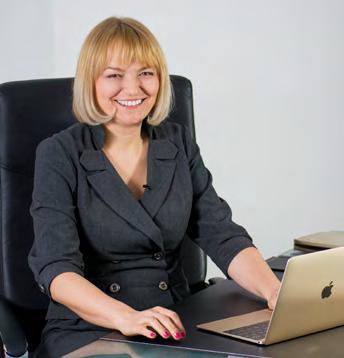
How many times have you decided to finally start working towards your ambitious goal, only to end up wasting hours on the internet looking at everything from Wikipedia entries on the Civil War to adorable puppy photos? Despite knowing that we want to accomplish big goals, it’s easy to lose motivation if we don’t spend our time effectively.
We all know that we should have a plan. Yet so many of us fail to act or use ineffective methods and blame ourselves for being procrastinators. Unless you were one of the lucky ones, no one taught you about good time management and business strategies growing up. But it is a lot simpler than it sounds: using your time effectively means focusing on ONE task for a defined period of time, and then taking a mentally refreshing break. Easier said than done, right?
Despite being aware that we need to focus, we keep multiple browser tabs open, keep phone notifications turned on during work, and check emails like crack addicts. As studies have shown, despite thinking that we may be great multi-taskers, doing multiple tasks at once will break down our emotional strength and ultimately our productivity. Time management does not necessarily refer to how long you work, but rather to working on the right things. No matter what we tell you here in this article, if you don’t focus on the stuff that’s truly important to you, effective time management and business strategy will not be your saviours. To-do lists are great for capturing ideas, but when it comes time to taking action on multiple tasks, you are often left overwhelmed and anxious.
In 1918, master hustler Charles Schwab (one of the richest men in the world at the time) solved this dilemma by hiring productivity consultant Ivy Lee to make his company Bethlehem Steel more productive. They agreed that if Lee’s advice didn’t work, Schwab wouldn’t have to pay him anything.
Lee pulled aside each of Schwab’s executives and prescribed the following simple remedy to increase productivity: • At the end of each workday, write down the six most important things you need to accomplish tomorrow. Do not write down more than six tasks. • Prioritize those six items in order of importance. • When you get to work tomorrow, focus only on the first task. Work until the first task is finished before moving on to the second one. • Approach the rest of your list in the same fashion. At the end of the day, move any unfinished items to a new list of six tasks for the following day. • Repeat this process every working day.
While this method seemed incredibly simple, after three months, Schwab was so impressed with the increase in productivity at Bethlehem Steel that he called Lee into his office and wrote him a check for USD 25,000 (the equivalent of USD 440,000 today). How could something so simple be so effective? Simple productivity systems often beat complex ones. Top performers in any field – whether it’s entrepreneurship, athletics, academia, the arts – know the value of focus. If you constantly divide your attention by trying to tackle multiple tasks at once, your productivity suffers.
Though very simple, the only productivity “trick” you’ll need to learn is working on your most important task first.
Focus on sustainability and community involvement
As the world economy rapidly moves away from an oil-based and consumption-driven model to a green, sustainable way of doing business, companies are starting to focus on projects and ideas for a better world. BR sat down with Grzegorz Grabowski, the General Manager of Maspex Romania, to talk about the company’s CSR projects.
By Mihai Cristea
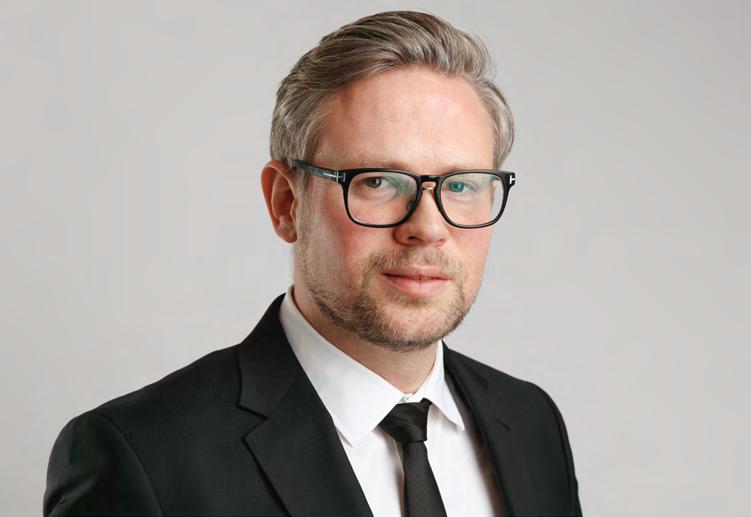
What types of environment projects have you carried out in the past year?
We have focused on pro-environmental investments aiming to decrease our consumption of electricity, gas and compressed air. One example was using LED technology in our newly built spaces.
What are Maspex Romania’s main environmental targets?
Since the beginning of its existence, Maspex Romania has consistently strived to minimise its negative impact on the environment, in every area of operation. We always make sure that our machinery and equipment are in proper condition and we have modern warehouses. The company plans out production in a way that ensures maximum capacity utilisation. It also raises staff awareness through frequent training session.
Our mission is to provide quality food that can be truly appreciated by consumers. We are a responsible company, constantly looking for environmental solutions and improving our production processes. This way, the operational activity in our factories is based on the highest environmental standards.
We have a pro-environmental policy through which we constantly invest in and search for modern solutions that minimise our impact on nature. Our investment plan follows the principle of sustainability by using modern technologies that can effectively meet business needs.
Maspex Romania develops its operations in line with its Environmental Permit, following all the provisions imposed by the law. The company rigorously monitors parameters, such as wastewater and air quality, according to legislative requirements and reports results to the authorities.
At the same time, as a manufacturer and importer, we have legal obligations regarding the product packaging we place on the market, which must be recycled. As such, we have signed responsibility transfer contracts with specialised companies (OIREPs).
We sort waste selectively based on material type. Sorting is the first phase of recycling, followed by dividing waste into several fractions. Waste is collected separately and temporarily stored in specialised containers to avoid contamination. Subsequently, it is handed over to authorised companies that carry out recovery or proper disposal.
What can you tell us about involving communities in protecting the environment, as part of a collective effort for a better future?
Through the Bucovina brand, Maspex Romania launched the “Keeping land wild” campaign, a social afforestation action that took place in the Valea Secu area in Suceava county. The Dorna Candrenilor City Hall and the Dorna Forest District were our partners in this endeavour, together with volunteers from the Vatra Dornei Youth Organisation and the Romanian Mountain Rescuers Association – Salvamont Vatra Dornei, and they all helped us plant fir seedlings across the area. Bucovina is a land with 23 nature reserves, virgin forests, as well as unique or rare species of flora and fauna. This rich land is
the source of the bottled Bucovina water, which is appreciated for its special qualities. Through our social responsibility actions, we set out to increase our concern for nature and to remind people that in order to live in balance, we need to keep wild lands untouched by civilisation.
What are the most effective ways to educate the population about responsible and long-term environmental behaviour?
We think that early education is the most effective long-term strategy. It is also very important for us all, as individuals and companies, to acknowledge and value the natural assets we still have around us. We must then work on protecting these resources and adopt a sustainable lifestyle. Along with other industries, we support the implementation of the DRS – deposit refund system for recyclable packaging in Romania. It is an environmental tool which has been successfully used in other European countries, it is very effective in supporting separate waste collection, and the recycling of beverage packaging.
What are your future plans for Maspex Romania’s environmental strategy?
We are a responsible company and our entire strategy is based on an environmentallyfriendly attitude. We are constantly working on improving our processes at every stage. For example, one of our future investments will target a new water supply pipe which will reduce water loss. A closed cooling system, with water recovery and reusage at all cooling installations along the production line is another planned investment.
What are the main pillars of Maspex Romania’s current CSR strategy?
Maspex Romania has long been involved in social responsibility actions, some of them conducted regionally and some nationally. Our social activity started in 2009, with the establishment of the SOS For Tummies Foundation. Since 2009 we have become increasingly involved and have developed social programmes in order to improve quality of life through education. The main themes of our social programmes are related to a healthy lifestyle through proper nutrition and exercise, as well as child safety.
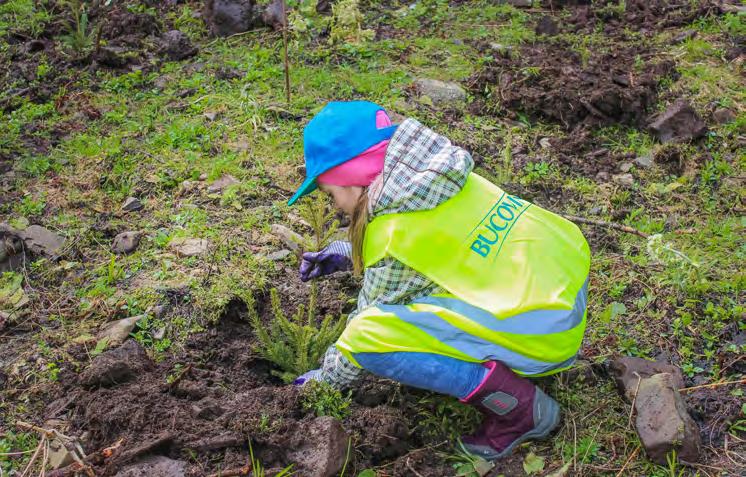
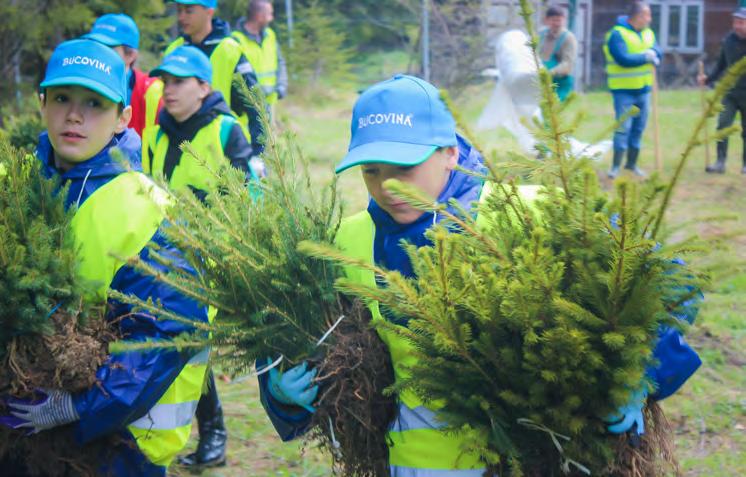
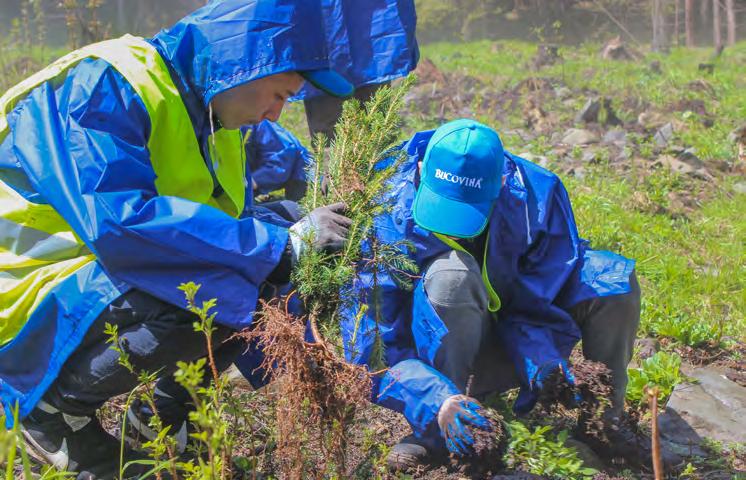


At the same time, Maspex Romania is actively involved in the community where it operates. From providing lunch for underprivileged children to providing medical equipment for health facilities in these areas, we do our best to help. We stand by people and communities to build a life in harmony. We strongly believe that a company works with people and, more importantly, for people. Business plans and objectives are all achieved based on hard work and strong emotional involvement, as well as respect for others.
What can you tell us about internal CSR projects carried out for Maspex Romania employees?
Tedi,” and “Tymbark Junior Cup” are three nationwide programmes. As part of these programmes we have frequently organised additional activities focusing on the communities to which we belong, in areas where the company has factories: Giurgiu, Vatra Dornei, Valenii de Munte. “The First Day of School with Tedi” is an internal project designed for our employees’ children who are about to start school. Tedi provides them with fullyequipped backpacks with all the supplies they need for school. We also organise summer camps for our Vatra Dornei employees’ children.
How do you think CSR initiatives in Romania will evolve in the coming years?
and we have adapted to the pandemic context where necessary – for example, the Tedi Safety School has been moved online. We’ve had to suspend projects that involved a physical presence until health conditions will allow us to resume them. We will of course continue to support local communities in these difficult times.
How much do you think the pandemic crisis has changed the concept of solidarity in Romanian society –for both companies and individuals – considering the fact that many companies joined forces to fight against COVID-19 in the first months of the pandemic?
The concept of solidarity in Romanian society has changed in the past few months, it has become stronger, and more significant. Both companies and individuals have joined the battle against our common enemy, the coronavirus.
As members of one big team, we have supported each other, but we have not forgotten those who are most exposed to danger in the front lines: doctors, nurses, and medical staff or those who need humanitarian aid. We were glad to be able to support medical staff in hospitals in Bucharest, Timisoara, and Iasi, as well as healthcare workers in our close communities – Vatra Dornei and Valenii de Munte.
Our actions did not stop there; they turned into constant support for the community. Our help has reached eight hospitals in Romania so far, five important associations, as well as town halls and social care departments in the country. We’ve supported doctors, nurses, rescuers, police officers, elderly people with special needs, children in care centres, young people, and war veterans.
We’ve donated necessary protective materials, as well as Maspex products. Just as doctors are on the front lines protecting us all, our employees represent the front line for the company, so we share with them the joy doing good. As a team, we will continue to be present in our communities. The most recent donations by Maspex Romania were made to: Valenii de Munte City Hospital, Vatra Dornei Ambulance Substation, Valenii de Munte City Hall, Vatra Dornei City Hall, Dorneni Youth Organisation, Prahova Police, DGASPC Suceava.







